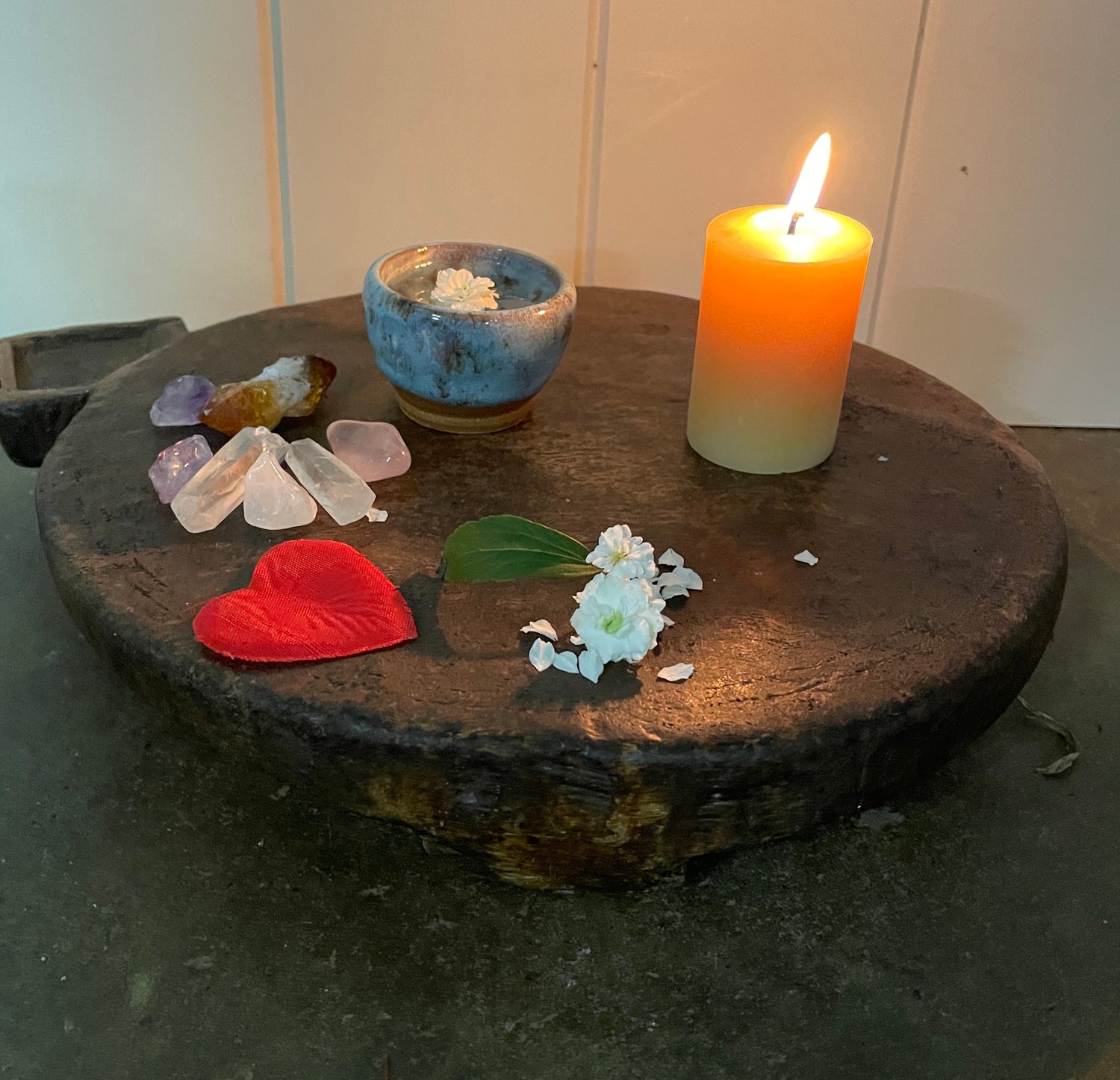Where to create your own sacred space?
“That which is placed on the altar is altered.” ~Marianne Williamson
Archaeologists have found evidence of altars and shrines in nearly all places across the globe where humans have lived - from the shrines of Ancient Greece to Day of the Dead altars in modern Mexico, the Taj Mahal in India, the Great Pyramids in Egypt, Mount Rushmore in Dakota, in churches, synagogues, temples, mosques and sacred circles. They are a part of religious traditions, spiritual beliefs.
The Latin root word of the altar is altare, meaning 'high place', and with this intention, altars are spaces to connect with our higher self and our highest good. While a personal altar in the home may seem a little curious for many Australians, they are common throughout most of the world. Japanese families adorn altars in their homes to pay their respect to ancestors and worship either Shinto or Buddhist gods.In nearly every home, office, and business in Vietnam, a small altar is erected to honour ancestors. A ancestral altar. In India, roughly eight-in-ten homes worship at home altars, and a spirit house is an altar to the protective spirit of a place and found in Southeast Asian countries of Burma, Cambodia, Laos, Thailand, Malaysia, Indonesia, Vietnam and the Philippines.
Why make a personal altar at home?
Throughout history, altars and shrines have become a way to put our feelings and thoughts into the physical world. They help us remember, heal, and reflect. They are a place for prayer, reflection, lectio divina (contemplation), meditation, chanting, personal growth or any form of inner work. A special space, with a special meaning and a safe place. They are a great way to nurture and energise us, foster our creativity, illuminate our deepest desires and light the way for the life we want to live. Maybe a place for spiritual growth or spiritual journey. They can become an outer representation of your inner attunement, impacting your energy and mood. And for those who know the deep chasm of grief and loss, an altar can be a much-needed companion, bringing a small amount of predictability to an uncertain future and even providing a buffer against the dark sweep of sadness that seeks to pull us in. They give us a way to ground our yearnings and sorrows into concrete activities.
How to create your sacred altar space?
When it comes to creating an altar, there are no hard and fast rules, nor do they need to be complicated or necessarily bound by tradition. Creating your own altar is deeply personal - the only essential elements is to listen to your heart and trust your intuition. The goal of the altar is to create a sacred space that makes us feel comfortable, welcomed, and supported. Visiting your own personal space, a designated space on a daily basis.
Where do I put my altar?
Choose a place that looks and feels ‘right’. Altars can be built anywhere and usually on a flat or raised surface. This could be a small table or platform, but it could also be on a shelf, tabletop or windowsill. Your altar also doesn't need to be large. Due to space restrictions or simple preference, a 'tiny' altar may be preferable. Tiny altars can be accommodated within the confines of a dinner plate. Whether you make a small or large altar, keep your space dedicated to its purpose and clear and clean of debris and clutter.
Do what feels most comfortable for your needs and your current life context. We’ve seen beautiful altars in bedrooms, lounge rooms, window sills, offices, gardens, forests, and even closets. You may want to ask yourself the following questions:
- Does this place look 'right'?
- Does this place feel ‘right’?
- Do I have privacy here?
- Is this a quiet place?
- Is the energy here hurried, stressed, or heavy?
- Can I build an altar here without disrupting or inconveniencing anyone else?
What goes on my altar?
You can include anything on your altar, but make sure you design it how you would like it, not how you think it ‘should’ look. You determine what makes an item 'right' for your altar. Include meaningful objects and brings you feelings of connection, peace, love, or inspiration, it's a perfect choice.
Here is a list of things you could include on your altar:
- Candles – driven by the element of fire, candles lift and elevate an altar. The simple act of lighting a candle can ground and connect you to both yourself and the ritual or ceremony.
- Rose quartz for the heart
- Elements of nature – feathers, stones, flowers, crystals, bones, plants, shells, sand, and water
- Murtis - a devotional image as a statue, icon, or idol of a deity or saint
- Mala or Prayer Beads
- Oracle cards and pieces of art
- Sacred texts and prayer books
- Journaling is a great daily practice
- Offerings - a flower, fruit, candles, prosphora, wine, oil, or incense
- Photographs
- Objects that reflect yin/yang, light/dark, masculine/feminine
- Items that symbolise the continuum of life, death, and transformation.
- Items that enhance energy, such as crystals and chimes.
- Inspiring quotes
- Written notes
Have one or all of the above. Most importantly, your altar needs to look and feel authentic to you and your unique needs. Remember that you don’t need to purchase trinkets or social-media-pretty-altar items. Doing so, in fact, can take away from this space's deeper intention and purpose. While creating your altar is an integral part of the practice, it's all just décor until your use it for spiritual practice.
Here is a selection of some candles that would be perfect for a personal altar:
Happy Lights- Our most popular candle in glass. Beautiful is many ways with a calm light.
Mullumbimby beeswax Lights- Our smallest pillar candle. Freestanding and best pillar for short burn times
Taper beeswax candles. If you would like a candle to burn 1 minute or 10 hours, these are ideal.
Spirit pillar beeswax candle. Used as vidual candles, that is burning for long periods of time.


